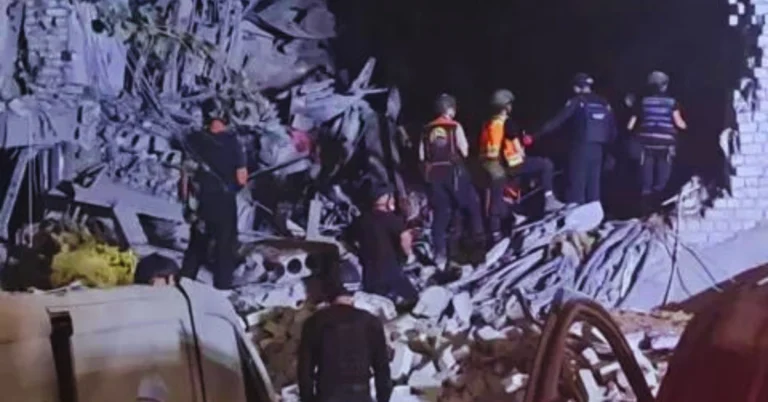The escalating struggle between Russia and Ukraine has captured international interest, with ultra-modern reviews highlighting a particular extreme period of army aggression. On August 29, 2024, Russia launched a chain of large strikes toward Ukraine, marking the second consecutive day of heavy bombardments. This improvement underscores the severe and ongoing nature of the war, which has had extended manner-undertaking implications for neighborhood balance, international individuals of the family, and humanitarian issues. In this essay, we can have a look at the context and impact of these movements, the responses from numerous stakeholders, and the wider implications for the global network.
Context of the Conflict
The struggle between Russia and Ukraine, which started in 2014 with the annexation of Crimea and similarly intensified with Russia’s large-scale invasion in 2022, has continued to reinforce over time. The battle is rooted in a complicated blend of historic grievances, territorial disputes, and geopolitical rivalries. Today’s moves represent a dramatic escalation in the intensity of the war, signaling Russia’s willpower to achieve its strategic objectives in Ukraine irrespective of mounting worldwide stress and monetary sanctions.
The importance of those current actions can not be overstated. They are part of a broader pattern of competitive military procedures employed with the aid of Russia, which has protected targeted attacks on crucial infrastructure, civilian regions, and strategic navy websites. The persistent bombardments are geared closer to weakening Ukraine’s capability to stand up to and exert intellectual strain on the Ukrainian government and its civilian population.
Impact on Ukraine
The immediate impact of these movements on Ukraine has been devastating. The assaults have resulted in considerable harm to infrastructure, which encompasses power grids, transportation networks, and home regions. The destruction of essential infrastructure now not handiest hampers Ukraine potential to conduct regular activities but also complicates humanitarian remedy efforts and disrupts financial sports.
The human value of these moves is in addition excessive. Civilian casualties and accidents had been recommended, contributing to an already dire humanitarian scenario. The strikes have additionally compelled many people to escape their houses, growing a new wave of internally displaced people and exacerbating the existing refugee crisis. The mental impact on the Ukrainian population is profound, with extended trauma and anxiety the various ones once tormented by the bombings.
International Reactions and Responses
The international community has answered with a mixture of condemnation and assistance for Ukraine. Many nations and global businesses have issued sturdy statements condemning the attacks and calling for a right-away ceasefire. The United Nations, the European Union, and diverse human rights organizations have expressed grave concerns about the escalation of violence and its effect on civilians.
In response to the escalating struggle, Western countries have persisted in offering navy and financial assistance to Ukraine. This help includes the supply of superior weaponry, monetary resources, and humanitarian comfort. The U.S. And its European allies have performed a crucial role in bolstering Ukraine’s defenses and mitigating the results of the battle on its populace. However, the effectiveness of this useful resource is frequently contingent on the evolving dynamics on the floor and the capability of Ukrainian forces to leverage the help provided.
At the same time, diplomatic efforts to remedy the battle have faced first-rate stressful situations. Peace negotiations and ceasefire agreements have struggled to gain traction, as both Russia and Ukraine stay entrenched in their positions. The complexity of the struggle, blended with competing pursuits amongst global actors, has made it tough to gain a long-lasting selection.
Broader Implications
Today’s escalation in the conflict has several broader implications for the worldwide network. Firstly, it highlights the persevering volatility of local protection in Eastern Europe. The instability because of the conflict poses dangers now not exceptional to Ukraine but additionally to neighboring global locations and the wider European safety architecture. The possibility of spillover outcomes and neighborhood destabilization remains a hassle for policymakers.
Secondly, the continued aggression has underscored the limitations of worldwide diplomacy in addressing protracted conflicts. Despite good-sized diplomatic efforts and sanctions imposed on Russia, the struggle has continued, elevating questions about the effectiveness of current techniques in undertaking a nonviolent selection.
Thirdly, the humanitarian impact of the conflict has drawn attention to the need for added sturdy mechanisms for protecting civilians in battle zones. The destruction of infrastructure and the following displacement of populations spotlight the pressing need for multiplied humanitarian useful aid and aid for affected businesses.
Finally, the struggle has broader implications for global geopolitics. The ongoing aggression has strained the circle of relative participants between Russia and Western nations, contributing to an extra-polarized worldwide environment. The response to the conflict will likely form future geopolitical alignments and affect the strategies of fundamental global powers.
Conclusion
The huge Russian strikes towards Ukraine for the 2d consecutive day represent an important juncture in the ongoing conflict between the two international locations. The on-the-spot impact on Ukraine has been intense, with big harm to infrastructure and a growing humanitarian disaster. The worldwide community has answered with condemnation and assistance for Ukraine, however undertaking an extended-lasting resolution remains tough.
Read more: Gas Leak in Isfahan IRGC Facility Implications for Military Safety and Regional Stability


